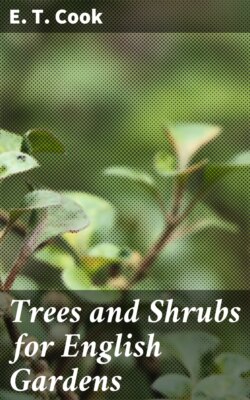Читать книгу Trees and Shrubs for English Gardens - E. T. Cook - Страница 49
На сайте Литреса книга снята с продажи.
TREES AND SHRUBS FOR SEA-COAST
ОглавлениеTable of Contents
In planting trees and shrubs near the sea, two important matters must be considered—(1) fierce gales; (2) salt spray. As a protection against storms much may be done by planting quick-growing things, such as Poplars and Willows, and in this sheltered area more permanent trees and shrubs may be put. This way of planting for shelter where bleak places are to be clothed with trees and shrubs is universally adopted in some form or other, sometimes in the shape of hedges or belts, and in the other cases the plants are all placed much thicker together than they are to permanently remain, thus forming a compact mass against which the wind makes little or no impression. In this last-named case continual thinning will be necessary as they grow up, for if left too long the plants become weak, and the advantage gained by the thicker planting is then completely lost. A beautiful seaside shrub, and the best, too, for forming shelter hedges of low or medium height is the Tamarisk, which retains its freshness throughout the season till the autumn, however much exposed to the sea.
It is difficult to make a list of trees and shrubs suitable for seaside planting around the British Isles, as the coast-line is so varied, and the action of the Gulf Stream has great influence on the vegetation of many parts of our western coasts. As no hard and fast line can be drawn, the first list contains those trees and shrubs that may be regarded as thoroughly hardy, unless otherwise specified, and the second list those that are available for planting in the Isle of Wight, in the south and west of England, and in some parts of Ireland.
MAIDENHAIR TREE (Ginkgo biloba syn. Salisburia adiantifolia); FROGMORE.
